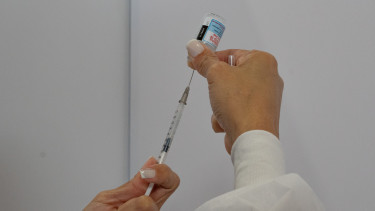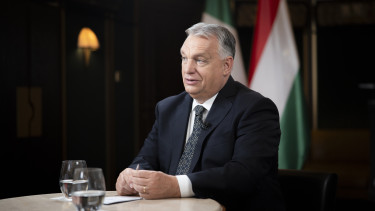EU clears use of BioNTech/Pfizer COVID-19 vaccine for 12-15 year olds

Today, adopts a decision to approve the use of the BioNTech/Pfizer vaccine for 12-15 year olds. ▶️ Member States can now choose to expand their vaccination rollout to young people. To put an end to the crisis, every dose counts. @EU_Commission
— Stella (Kyriakides) May 31, 2021
The decision comes after European Medicines Agency (EMA) backed the use of the vaccine in 12- to 15-year olds on 28 May.
EMA’s human medicines committee (CHMP) has recommended granting an extension of indication for the COVID-19 vaccine Comirnaty to include use in children aged 12 to 15. The vaccine is already approved for use in adults and adolescents aged 16 and above.
The use of the Comirnaty vaccine in children from 12 to 15 will be the same as it is in people aged 16 and above. It is given as two injections in the muscles of the upper arm, given three weeks apart.
It is up to individual member states to decide if and when to offer the vaccine to teenagers.
Moderna's COVID-19 vaccine is safe and highly effective in children ages 12 to 17, the company said on 25 May. It would be the second COVID-19 vaccine available for the age group in the United States if it is authorized for use by the FDA, in addition to Comirnaty that was cleared for use on 10 May.
Hungary opts out of new joint EU purchase of Pfizer/BioNTech vaccine
Hungary has approved the use of Comirnaty for adolescents aged 16-18.
The country has over 1.4 million childred aged 0-14, and some experts argue that sooner or later they - particularly those with conditions that increase the risk of severe COVID-19 - would also need to be vaccinated not only to make them immune to SARS-CoV-2 but also to prevent new variants from developing among them and also to help the country reach the heard immunity threshold (currently estimated at 80 to 90%).
Hungary, with a population of 9.8 million, has so far administered first doses to 5.1 million and second doses to 3.6 million people. That's pretty far from herd immunity.
On 20 May, the European Commission confirmed a new deal with Pfizer/BioNTech for the possible purchase of up to 1.8 billion doses until 2023, following 600 million doses ordered via the two previous contracts.
Hungary was the only country in the bloc that opted out of the joint purchase. Prime Miniter Viktor Orbán's chief of staff Gergely Gulyás said that even if a booster shot was needed "there are plenty of vaccines from Eastern and Western sources as well," he said. Orbán has strong ties with Russia and China and Hungary had green-lighted the use of their shots before clearance by the EMA or the World Health Organisation (WHO).
There are several problems with this approach, though. Firstly, Russia's Sputnik V has not been cleared for use for children yet. However, Alexander Gintsburg, Director of the Gamaleya National Research Center for Epidemiology and Microbiology that developed Sputnik V, said in February that the formulation of the vaccine for children will not change, although dosages of the preparation will differ depending on age. He also said research this time would be conducted in terms of a nasal form of this vaccine, which, quite possibly, will also be first of all recommended to children.
Secondly, China's Sinopharm said in early March that it had completed clinical trials for groups aged 3-17 and would submit its data for approval soon. No details of the trial were disclosed and unless Hungary choses to go ahead without EMA approval again, using BBIBP-CorV for children may not be an option for a while.
Thirdly, even if Hungary now had enough doses of Comirnaty, the vaccine remains effective for six months even if it stored (prior to dilution) at -90 °C to -60 °C in the original package, protected from light. Within the 6 months shelf-life unopened vials may be stored and transported at -25 °C to -15 °C for asingle period of up to 2 weeks and can be returned to -90 °C to -60 °C.
Thawed vials have a 1-month shelf life at 2 °C to 8 °C, up to 12 hours may be used for transportation.Prior to use, the unopened vial can be stored for up to 2 hours at temperatures up to 30 °C. After dilution, the vaccine must be stored at 2 °C to 30 °C and used within six hours.
About the trial
The effects of Comirnaty in children were investigated in 2,260 children aged 12 to 15 years.
The trial showed that the immune response to Comirnaty in this group was comparable to the immune response in the 16 to 25 age group (as measured by the level of antibodies against SARS-CoV-2). The efficacy of Comirnaty was calculated in close to 2,000 children from 12 to 15 years of age who had no sign of previous infection.
These received either the vaccine or a placebo (a dummy injection), without knowing which one they were given. Of the 1,005 children receiving the vaccine, none developed COVID-19 compared to 16 children out of the 978 who received the dummy injection. This means that, in this study,
the vaccine was 100% effective at preventing COVID-19 (although the true rate could be between 75% and 100%).
The most common side effects in children aged 12 to 15 are similar to those in people aged 16 and above. They include pain at the injection site, tiredness, headache, muscle and joint pain, chills and fever. These effects are usually mild or moderate and improve within a few days from the vaccination.
The CHMP concluded that the benefits of Comirnaty in this age group outweigh the risks.
The CHMP noted that due to the limited number of children included in the study, the trial could not have detected rare side effects. The committee also noted that EMA’s safety committee PRAC is currently assessing very rare cases of myocarditis (inflammation of the heart muscle) and pericarditis (inflammation of the membrane around the heart) that occurred after vaccination with Comirnaty, mainly in people under 30 years of age. Currently there is no indication that these cases are due to the vaccine and EMA is closely monitoring this issue.
Despite this uncertainty, the CHMP considered that benefits of Comirnaty in children aged 12 to 15 outweigh the risks, in particular in children with conditions that increase the risk of severe COVID-19.
How Comirnaty works
Comirnaty works by preparing the body to defend itself against COVID-19. It contains a molecule called messenger RNA (mRNA) which has instructions for making the spike protein. This is a protein on the surface of the SARS-CoV-2 virus which the virus needs to enter the body’s cells.
When a person is given the vaccine, some of their cells will read the mRNA instructions and temporarily produce the spike protein. The person’s immune system will then recognise this protein as foreign and produce antibodies and activate T cells (white blood cells) to attack it.
If, later on, the person comes into contact with the SARS-CoV-2 virus, their immune system will recognise it and be ready to defend the body against it.
The mRNA from the vaccine does not stay in the body but is broken down shortly after vaccination.
Click here for the EMA's product information on Comirnaty.








